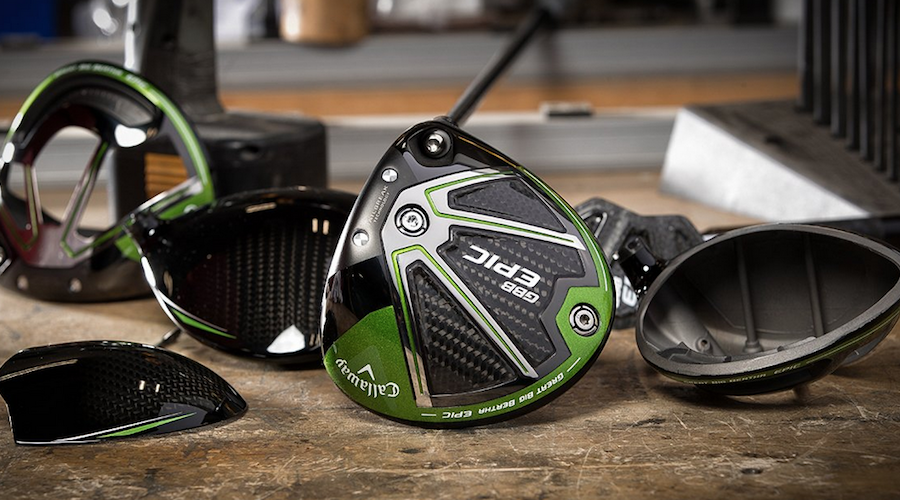Boosted by higher sales and improved margins, Calloway Golf Co. shaved its loss in the fourth quarter on an adjusted basis due to $17 million, or 18 cents a share, from $30 million, or 33 cents, a year ago.
On a conference call with analysts, Chip Brewer, president and CEO, described market conditions as “choppy with softness in both Asia and Americas.” But he said the overall golf market is becoming more rational, which bodes well for the long run.
“Positive indicators include less promotional activity, less excess inventory and several participants pulling back or exiting the space,” said Brewer. “Within the golf equipment space, we are in an increasingly strong position. Relative to most of our competition, we believe we have a structural advantage driven by our momentum, scale and commitment, proven operating ability and strong capital structure.”
Among the changes in the golf industry has been Nike’s exit from the golf equipment category and Adidas’ exploration of a sale of TaylorMade.
On a reported basis, net earnings in the fourth quarter reached $123 million, or $1.28 per share, boosted by the reversal of the deferred tax valuation allowance.
Revenues advanced 7.2 percent to $164 million and gained 5 percent on a currency-neutral basis. Gains were seen in both the golf club and golf ball operating segments. Through continued market share gains, strong momentum, particularly in the U.S. green grass channel, and the company’s new joint venture in Japan, Callaway was able to grow its sales despite overall industry headwinds and softer-than-expected market conditions in Asia.
Gross margins in the quarter improved 530 basis points to 38.6 percent as compared to 33.3 percent for the comparable period in 2015. The improvement was primarily due to higher average selling prices in the woods, irons and golf ball categories and a decrease in promotional activity driven by longer product lifecycles and lower inventory levels, as well as improved operational efficiencies resulting from the many initiatives the company has implemented over the last several years.
For the full year, sales grew 3.2 percent to $871 million while increasing 2 percent on a currency-neutral basis. On an adjusted basis, earnings more than doubled to $49 million, or 51 cents a share, from $15 million, or 17 cents, in the same period a year ago. With the tax reversal, net earnings in the latest year were $190 million, or $1.98 a share.
On the call, Brewer noted that revenues were flat in the U.S. in the year despite challenging market conditions, including the bankruptcy of Golfsmith, and were aided by market share gains. Callaway’s full-year hard goods market share was 22.6 percent, up 150 basis points year over year in the U.S., with double-digit growth in both green grass distribution and custom product. Clubs finished the year with a 25.6 percent share, up 180 basis points, while golf balls ended with 13.8 percent share, up 280 basis points.
“We are very pleased with our U.S. business performance over the last several years,” said Brewer. ”This business is now strong and well positioned.”
Brewer said that despite challenging market conditions, sales for the year grew in Asia thanks to the addition of its Japan apparel joint venture as well as strong market share performance in its core business. Full-year hard goods share was 15.7 percent, up 70 basis points year over year.
Europe delivered an “excellent” year, although challenged by currency movements. Callaway’s European hard goods market share is at record levels of 22.2 percent, up 140 basis points year over year, and it remains the number-one brand in that market.
Regarding product launches, the new Epic driver “has gotten off to a fast start both on Tour and at retail, including impressive pre-sale numbers,” according to Brewer. On the putter side, a proprietary technology, Odyssey O-works, that improves roll quality is expected to support share gains.
The Chrome Soft X, a companion ball to its successful Chrome Soft, is being launched to drive the ball category. Said Brewer, “The addition balances and completes our Tour ball offering in a manner recognizable and understood by most avid golfers.”
The accessories category should benefit from the full-year effect of its Callaway apparel joint venture in Japan as well as the January acquisition of OGIO.
OGIO is expected to contribute approximately $45 million in revenue for full year 2017. After absorbing non-recurring transaction and transition expenses of approximately $7 million, OGIO is expected to be dilutive by approximately 2 cents a share to Callaway’s 2017 earnings per share, but is expected to be accretive thereafter.
For 2017, Callaway expects sales to be in the range of $910 million to $935 million. On a currency-neutral basis, sales are expected between $938 million and $963 million. The pro-forma constant currency net sales growth of 8 percent – 11 percent is expected to be driven by the strength of the company’s 2017 product line, the addition of the OGIO acquisition and the full-year impact of the Japan apparel joint venture.
Gross margin is projected to increase to 45.4 percent, an improvement of 120 basis points. Earnings per share are estimated to be in the range of 31 to 37 cents a share, a year-over-year increase of 7 to 13 cents, or 29 percent to 54 percent.
First quarter 2017 earnings per share are estimated to be in the range of 21 to 24 cents compared to 26 cents in 2016. This year-over-year decrease in EPS for the first quarter is due to a change in sales mix. Because of seasonality, the Japan joint venture and the OGIO business have lower Q1 profitability as compared to the core golf equipment business. However, on a full-year basis and excluding the non-recurring costs related to the OGIO acquisition, these new business ventures are expected to be accretive to its operating income range.
Photo courtesy Calloway Golf
















